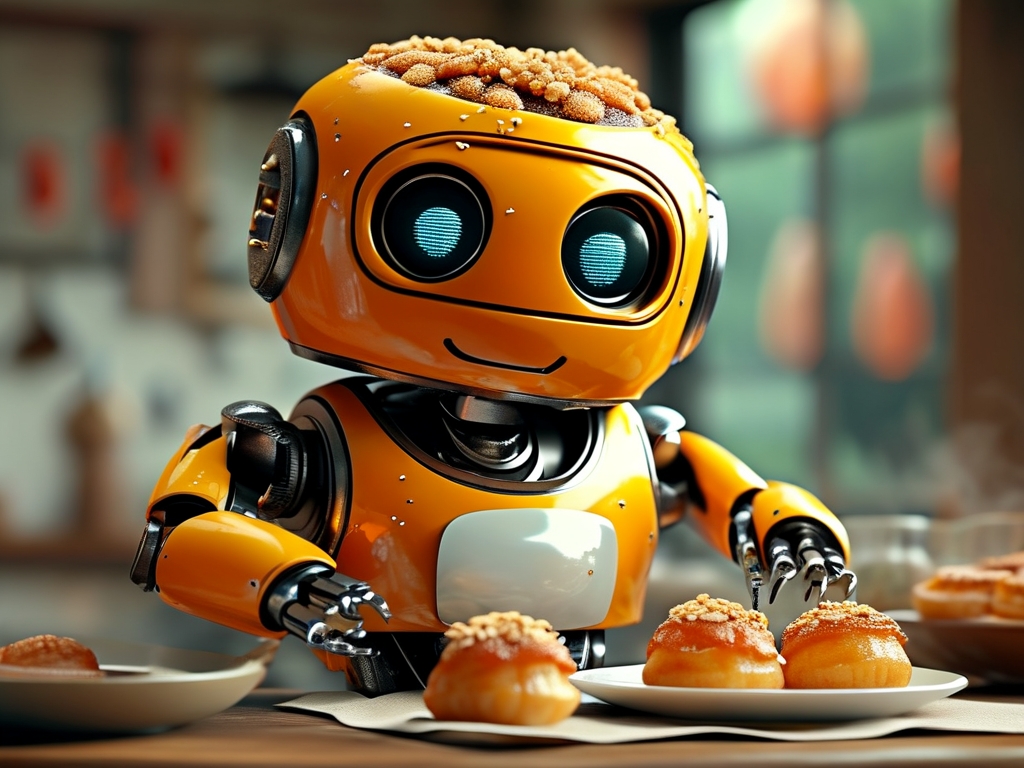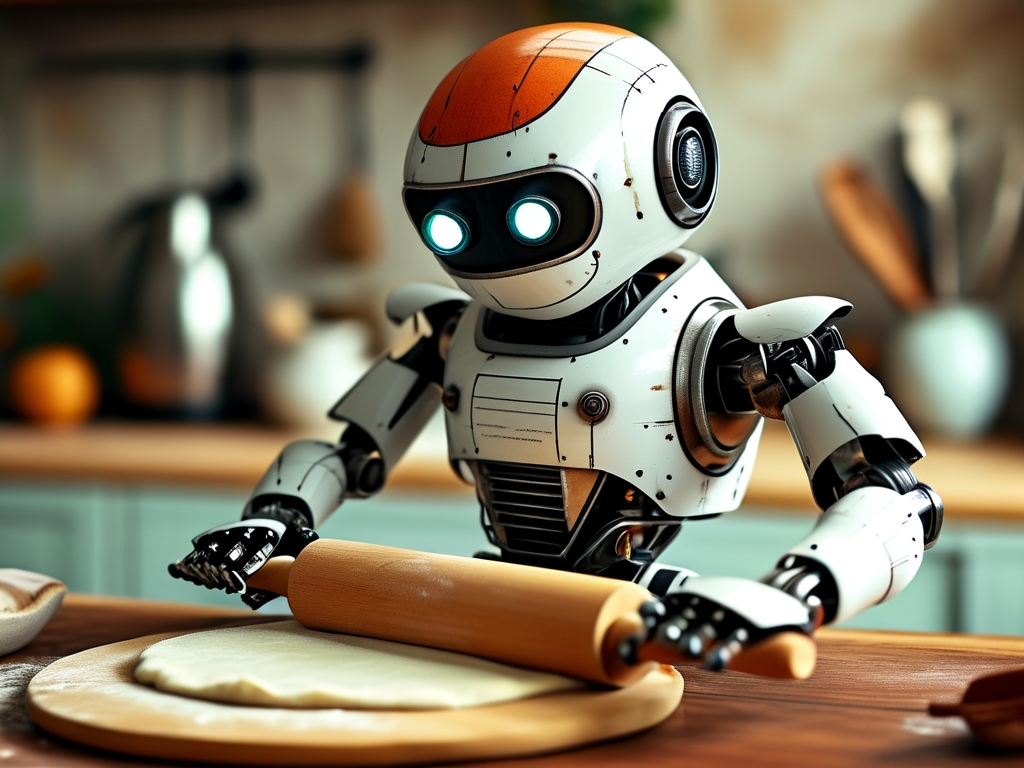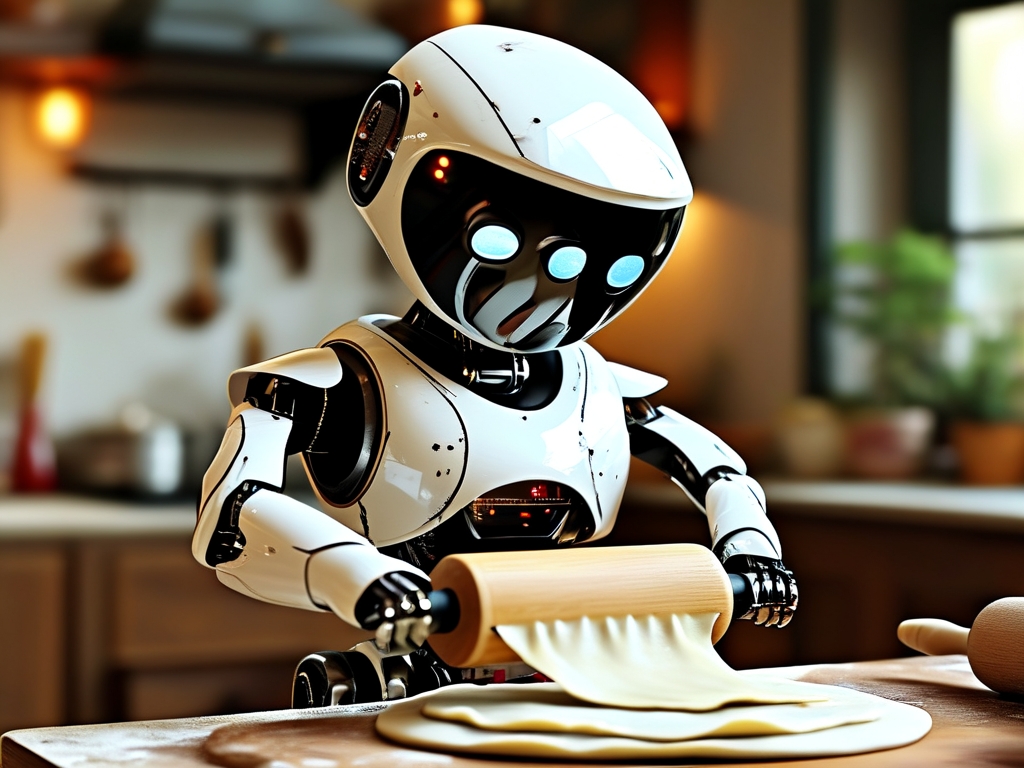The fusion of robotics and culinary arts has reached new heights with the emergence of robotic fried cake (commonly known as "" in Chinese cuisine) production systems. This technology combines precision engineering, artificial intelligence, and food science to automate a traditionally manual process. In this article, we explore the technical principles behind robotic fried cake technology, its components, and its implications for the food industry.

1. Core Components of Robotic Fried Cake Systems
A robotic fried cake system comprises three primary modules:
- Dough Preparation Unit: Equipped with sensors and actuators, this module mixes flour, water, and other ingredients to achieve consistent dough viscosity. Machine learning algorithms adjust ratios based on environmental factors like humidity.
- Shaping and Frying Mechanism: Robotic arms with custom-designed molds shape the dough into uniform pieces. High-precision temperature controllers maintain oil at optimal frying conditions (typically 180–200°C).
- Quality Control System: Computer vision cameras inspect color and texture, while force sensors ensure proper crispness. Rejected units are automatically diverted for reprocessing.
2. Key Technologies Enabling Automation
a) 3D Modeling and Kinematics
The shaping process relies on robotic arms programmed with 3D spatial models of traditional fried cake designs. Inverse kinematics algorithms calculate joint movements to replicate human-like dexterity. For example, the "twist-and-press" motion used by skilled chefs is mimicked using six-axis industrial robots.
b) Thermal Dynamics Optimization
Maintaining oil temperature is critical. Closed-loop PID (Proportional-Integral-Derivative) controllers adjust heating elements in real time. Infrared sensors monitor heat distribution, preventing uneven cooking—a common issue in manual operations.
c) Machine Learning for Adaptive Recipes
Neural networks analyze historical data from successful batches to optimize parameters. For instance, if a humidity spike causes dough absorption rates to change, the system autonomously reduces water content by 2–3% without human intervention.
3. Operational Workflow
A typical production cycle involves:
- Ingredient dispensing (error margin: ±0.5g)
- Kneading (120 RPM for 90 seconds)
- Resting (15 minutes at 25°C)
- Shaping (3 seconds per piece)
- Frying (90 seconds per batch)
- Cooling and packaging
The entire process reduces human labor by 80% while increasing output consistency.
4. Challenges and Solutions
Challenge 1: Oil Degradation
Continuous frying causes oil oxidation. Robotic systems address this by:
- Implementing UV spectrophotometers to measure oil quality
- Automating oil filtration and replacement cycles
Challenge 2: Cultural Authenticity
Purists argue machines lack the "soul" of handmade fried cakes. To bridge this gap, some systems incorporate variability algorithms that introduce minor asymmetries, mimicking artisanal imperfections.
5. Economic and Environmental Impact
- Cost Efficiency: A single robotic unit can produce 1,200 fried cakes hourly, equivalent to 10 human workers. Payback periods average 18 months.
- Sustainability: Advanced oil recovery systems reduce waste by 40%, while energy-efficient fryers cut carbon emissions by 25%.
6. Future Directions
Emerging trends include:
- Hybrid Human-Robot Stations: Collaborative robots (cobots) assisting chefs in premium restaurants
- IoT Integration: Real-time supply chain adjustments based on sales data from smart vending machines
- Blockchain Traceability: Recording ingredient sources and cooking parameters for food safety audits
Robotic fried cake technology exemplifies how automation can enhance traditional industries without compromising quality. By harmonizing mechanical precision with culinary artistry, these systems pave the way for scalable, sustainable food production. As AI continues to evolve, we may soon see robots mastering regional variations—from Beijing’s sweet glutinous rice cakes to Shanghai’s savory scallion versions—ushering in a new era of globalized yet personalized cuisine.




